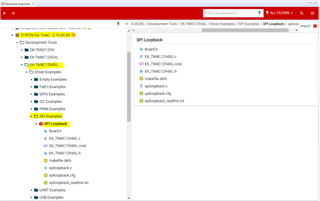I need to use EK-TM4C1294XL as SPI slave (SSI2 port). Data from the master comes in a packet of 8 registers of 16 bytes (128 bits in total), at a frequency of 1 MHz. The time between new CS is minimal, the data goes continuously one after another.
How can I manage to get this data on the EK-TM4C1294XL and correctly parse it into registers?
I would like to work in TI-RTOS.
-
Ask a related question
What is a related question?A related question is a question created from another question. When the related question is created, it will be automatically linked to the original question.



